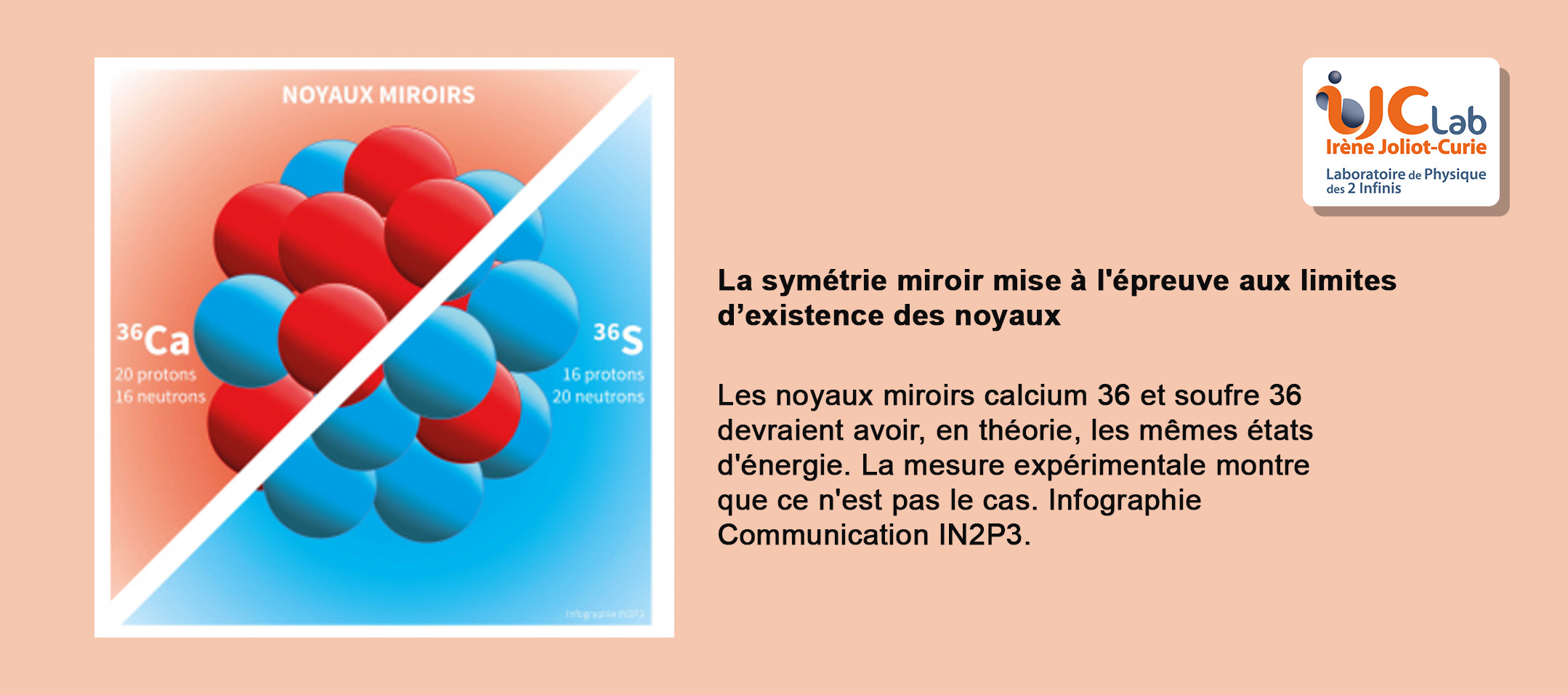
As part of an international collaboration, researchers from the Nuclear Physics Pole have shown that certain states of 36Ca have a very significant energy difference with the equivalent states of its “mirror” nucleus, 36S. This gap is the reflection of a very particular configuration of the nucleons which particularly highlights the subtle balance of forces in the atomic nucleus. These highly accurate measurements will provide an excellent test for theoretical models and improved predictions of nuclear reactions from stellar sites.
The principle of mirror symmetry stipulates that the nuclear structure remains the same when the numbers of neutrons and protons are exchanged: the two nuclei thus connected are called "mirror". However, the Coulomb interaction can break this symmetry and create an energy shift between the levels of the two mirror nuclei, the mirror energy difference. This is generally quite low, around 10 to 100 keV.
Detailed spectroscopy of the 36Ca nucleus, at the limits of existence of neutron-deficient nuclei, was carried out at GANIL (Caen) by transfer reactions of one neutron and two neutrons. The experimental device was based on the cryogenic hydrogen target loaned by Japanese collaborators and on the MUST2 charged particle detector, built at the time in collaboration between the IPN and the CEA. Members of the NESTAR Team from the Nuclear Physics Pole and GANIL were thus able to identify new states, and in particular the 02+ state, which is below the 21+ state, contrary to what has been observed in the mirror core of 36S. This state presents a mirror energy difference of the order of -500 keV, the largest ever observed (if we exclude the cases induced by continuum effects). This mirror symmetry breaking is well reproduced by layered model calculations. These results are part of the thesis of L. Lalanne (NESTAR Team, Nuclear Physics Pole) carried out at IJCLab in joint supervision with GANIL, and were the subject of a recent publication in Physical Review Letters.























